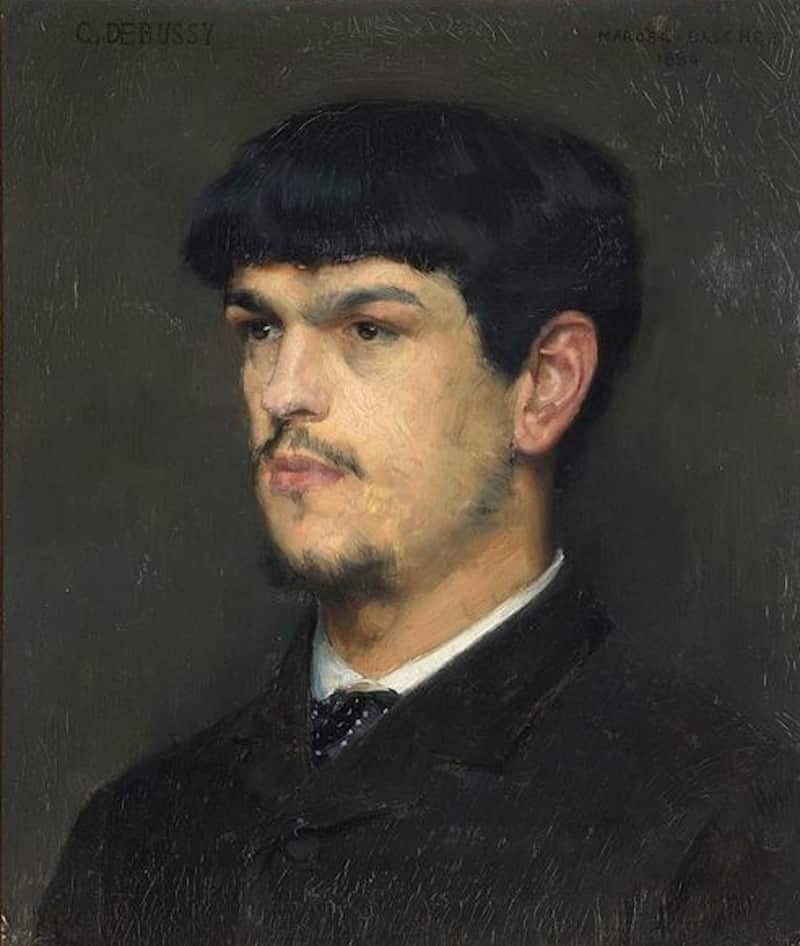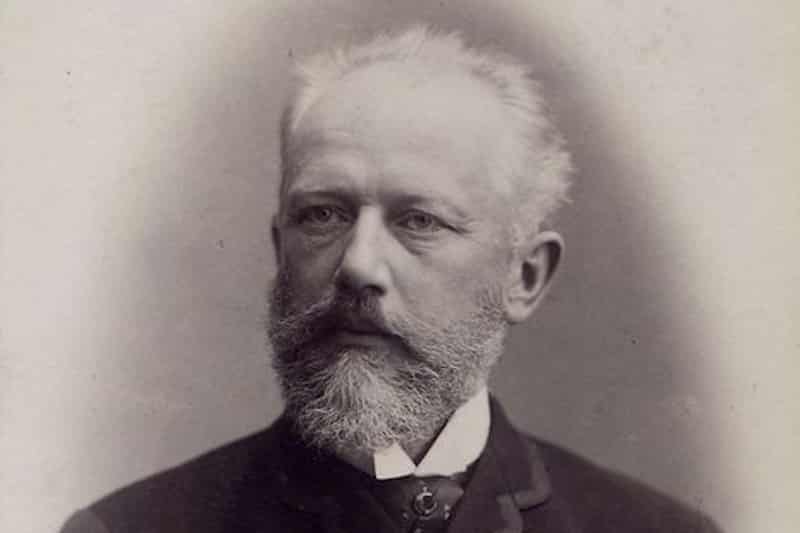French composer Claude Debussy lived between 1862 and 1918. He is often associated with the Impressionist movement in music, although he himself rejected this term.
Debussy came from a middle-income family where both parents were business people with little cultural involvement. He was admitted to the Conservatoire de Paris, an elite music school, at a young age to study music. He honed his skills over the years, culminating in the famous Pelléas et Mélisande opera in 1902.
Although Debussy is known all over the world, even up to this day, many things about him aren’t that much known. Here are 15 interesting facts about Claude Debussy that you might not know.
Related: Check out our list of famous French composers here.
1. He Started College At The Age Of 10

Debussy showed enough musical talent to be admitted to the Conservatoire de Paris music college at just ten years old. He was said to enjoy playing the piano so much that his parents thought he would be a piano virtuoso.
While at college, he developed a unique musical taste and created innovative compositions, much to the displeasure of the professors.
Unfortunately, the disapproval of his style meant that he lacked the support he required to develop his skills quickly. However, he still beat the odds and matured in his art, eventually leading to the fame he is known for.
2. He Worked With Nadezhda Von Meck

Nadezhda von Meck was a wealthy patron of the arts and businesswoman. Aside from being a lover of music, she also loved to travel, vacationing in Europe during the summers.
In the summers of 1880 to 1882, she hired Debussy for her private shows with family and friends. She also arranged for him to teach her children piano lessons. At the same time, she introduced Debussy to the affluent friends who attended her parties.
At some point, she sent some of Debussy’s compositions to Pyotr Ilyich Tchaikovsky, who was one of the recipients of her financial support.
3. Tchaikovsky Rejected His Work

Despite Nadezhda von Meck’s patronage, Tchaikovsky rejected Debussy’s work. This could be due to the stark contrast between their musical styles. While Tchaikovsky’s works were characterized by their adherence to classical structures, Debussy was beginning to explore new forms of expression.
Debussy’s music often rejected the conventional wisdom of the time. For example, he dismissed the idea that string instruments should primarily be used for lyrical purposes.
This innovative approach to composition was part of what set Debussy apart, but it may have also contributed to Tchaikovsky’s rejection.
4. His Style Ran Out Of Favor At The Prix De Rome
Debussy entered the Prix de Rome music competition a record three times. He lost two of the three times he tried, as the judges were more conservative and could not comprehend his style.
It was only after Debussy became a little more conservative with his style that the judges recognized it and handed him victory. The piece that won the competition was called “L’enfant Prodigue.”
The award came with a four-year scholarship to the Académie des Beaux-Arts and a residence at Villa Medici for further studies in music.
5. He Hated Being Called An Impressionist Artist

Debussy hated having his compositions labeled as impressionist music. He felt that impressionism was a way critics tried to box his innovative works of art into a fixed mindset.
According to Debussy, he was trying to do something different apart from everyone around him, and the style was good.
However, because critics were stuck in their old ways of thinking, they couldn’t understand what he was doing and had to rely on this moniker to make sense of his works. Until his death, Debussy did not accept the title of impressionist artist.
6. He Helped Shape The Development Of Modern Music
Debussy was known for his innovative use of non-traditional scales and chromaticism. He sought to free music from the constraints of traditional tonality and form, focusing instead on color, atmosphere, and the direct expression of emotions.
His work was a precursor to various modernist movements in music, contributing to the development of atonal music (music that avoids a key center) and other avant-garde styles.
Moreover, his novel approach to scales has also found its way into jazz and popular music. The so-called Debussy scale — a six-note scale that alternates whole steps and half steps — has been used by many jazz musicians for improvisation.
7. He Served In The French Army
The Franco-Prussian War was a conflict between the Second French Empire of Napoleon III and the Kingdom of Prussia, lasting from July 1870 to May 1871.
Debussy was only eight years old when the Franco-Prussian War broke out. His involvement in the army came later, during the final stages of the Paris Commune. It was during this turbulent period that Debussy was enlisted as a private in the French army despite being underage.
His military service, however, was brief. Due to his young age and the cessation of the Paris Commune, Debussy was released from his duties after a few months. He then returned to his music studies at the Paris Conservatoire.
8. He Had Multiple Love Affairs
As author Marcel Dietschy puts it in his biography of Debussy, there were women at each of Debussy’s career crossroads. His allure and success attracted women like ivy to a wall.
Debussy first lived with Gabrielle DuPont for ten years while he made a name for himself. However, he unceremoniously left her and married Rosalie Texier, a model.
After five years with Rosalie, he divorced her for Emma Bardac. They stayed as lovers for five years before marrying and having one child.
Yet these are just the women who were publicly associated with Debussy. Many others who crossed paths with the charismatic composer chose to remain out of the limelight.
9. Debussy Only Has One Child
Born on October 30, 1905, Claude-Emma Debussy, affectionately known as Chouchou, was the only child of Claude Debussy and his second wife, Emma Bardac.
Chouchou was the apple of her father’s eye, and their close relationship significantly influenced Debussy’s later works. Many suggest that her birth brought about a noticeable shift in Debussy’s musical style, with his compositions becoming noticeably lighter and more whimsical.
Sadly, her life was cut short by the diphtheria epidemic in 1919 when she was just 14 years old, a year after her father’s death.
10. He Dedicated A Piano Suite To Chouchou
One of the most notable tributes to Chouchou from her father is the piano suite “Children’s Corner.” Composed between 1906 and 1908, this six-movement suite is not meant to be played by children; rather, it reflects Debussy’s love for his daughter and his perception of the world through her eyes.
Each piece in the suite is dedicated to Chouchou and captures a different aspect of childhood, from lullabies to playtime. The pieces are filled with whimsy, charm, and a sense of innocence.
The third piece in the suite, “Serenade for the Doll,” for instance, is a delicate, lighthearted piece that evokes the image of a child playing with a doll. The final piece, “Golliwog’s Cakewalk,” is a playful take on the popular dance of the time, the cakewalk, and even includes a humorous reference to Richard Wagner’s opera Tristan und Isolde.
11. He Transformed Paul Verlaine’s Poem Into Music
One of the most famous of Debussy’s piano pieces ever produced was called “Clair de Lune.” The piece was the third of his four-movement workpieces called Suite Bergamasque in 1890.
However, Debussy decided it was not good enough for production and remastered it several times before finally publishing it in 1905. It contains excerpts and draws inspiration from a poem called “Clair de Lune” by Paul Verlaine.
This poem talked about moonlight and the beauty of songs blending with its light while praising the amazing features of nature.
12. He Left Unfinished Operatic Projects
Debussy only published one opera before his death. However, he was working on other projects at the same time.
Two of these projects were adaptations made from Edgar Allan Poe’s work: The first piece was titled “Le Diable Dans le Beffroi” and was adapted from a story by Poe called “The Devil in the Belfry.”
The second piece was called “Chute de la Maison Usher” and was based on a short story called “The Fall of the House of Usher.” Sadly, he did not have enough time to complete and publish them.
13. His Published Opera Was A Five-Act Love Story
The only opera that Debussy published, Pelléas et Mélisande, was a five-act love story that propelled him to fame. This act premiered at the 1902 Opéra-Comique that was held in Paris.
The libretto (longer text) was based on a play by Maurice Maeterlinck that had the same name.
Debussy’s opera is centered on a love triangle in which a prince rescues a girl from the forest, only for her to become attached to his half-brother. This arouses the brother’s feelings of jealousy and leads to death. The girl later dies while giving birth.
14. Debussy Ventured Into The Mythical
In yet another excellent adaptation of a poem, Debussy tells a story about the dreams of a half-human creature called Faun.
The piece was called “Prélude à l’après-midi d’un faune” and was adapted from a poem by Stéphane Mallarmé. Debussy’s symphonic orchestra debuted in 1894.
In his words, Debussy said that his piece did not try to interpret the famous poem but instead added the scenes that succeeded the story.
15. Debussy Died Of Colon Cancer
Debussy received the news that he had colon cancer in 1909. This was the start of a rapid downward spiral in his health.
He died on March 25, 1918, when France was engaged in the Battle of the Somme in World War 1. His funeral took place in deserted streets, as everyone had hidden from the approaching German army.
Debussy was laid to rest alongside other great names, such as Edith Piaf, Jim Morrison, and Oscar Wilde. However, his body was later moved to Passy Cemetery after the Germans bombed this cemetery.
Summing Up Our List Of Lesser-Known Facts About Claude Debussy
As you have read, Claude Debussy’s life and career were as fascinating as his music. From starting college at the tender age of 10 to working with notable figures like Nadezhda von Meck, his journey was filled with unusual anecdotes.
Debussy was indeed a trailblazer who challenged conventions and left a lasting impression on classical music. His life serves as a vivid reminder that great art often comes from unexpected places and defies easy categorization.
With countless musicians having reworked his music over the years with amazing results, Debussy will always be remembered as the forefather of 20th-century music.
